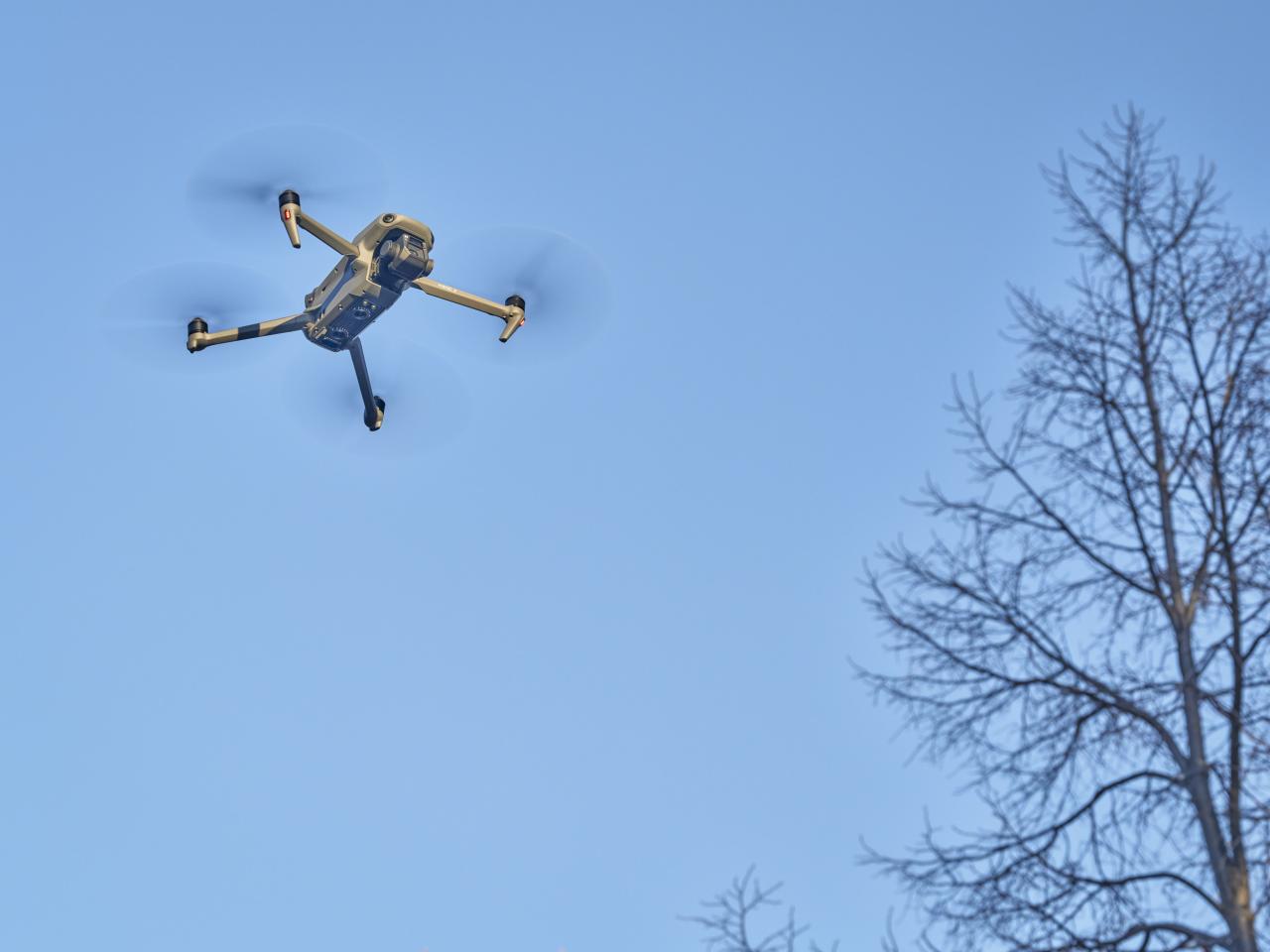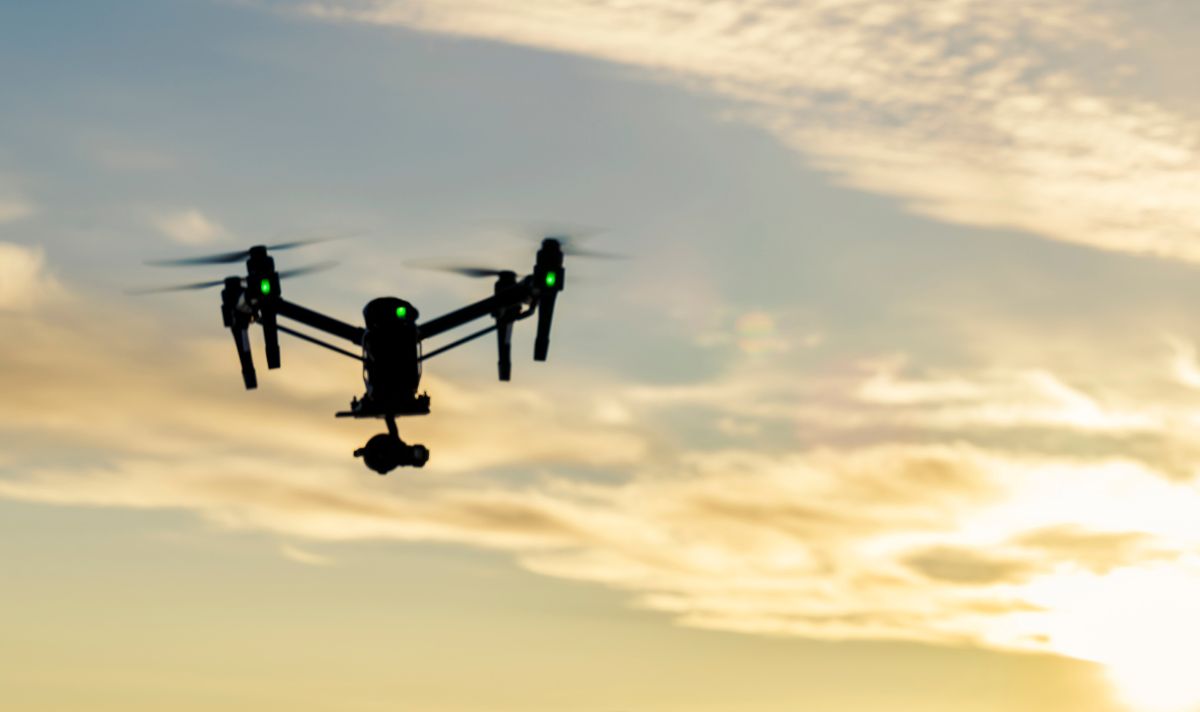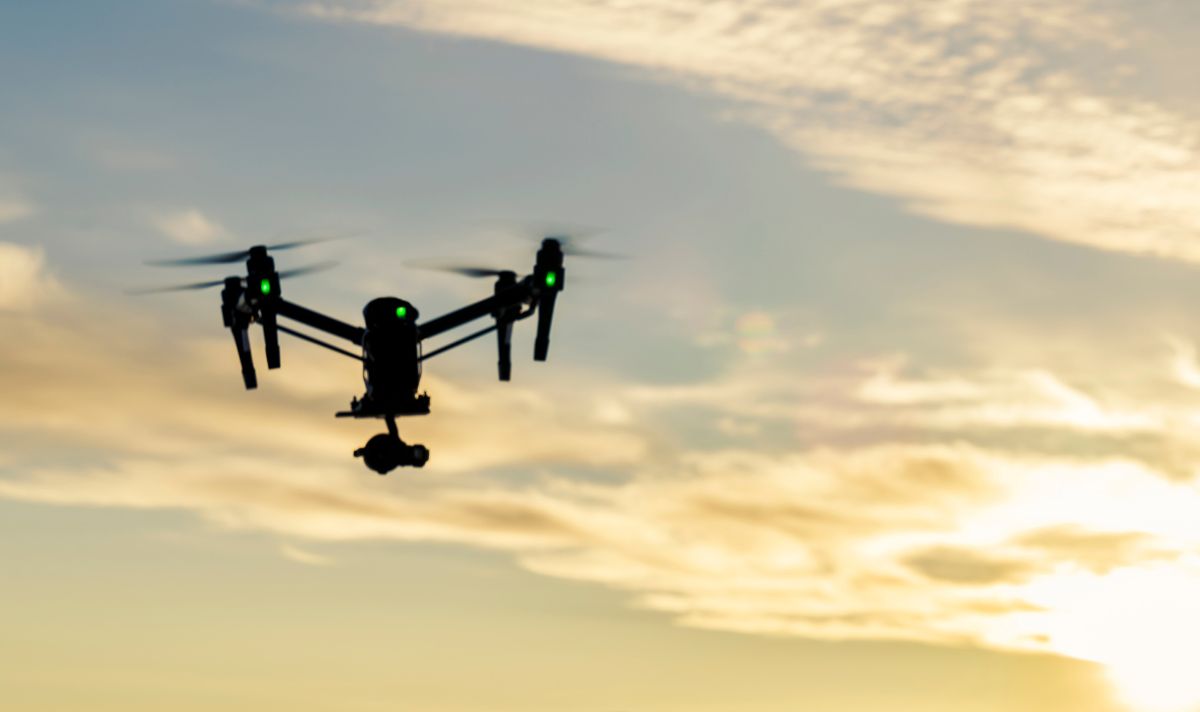Drone sightings around the world are on the rise, sparking concerns about security, privacy, and the future of airspace management. From small hobbyist drones to sophisticated military models, these unmanned aerial vehicles are increasingly prevalent, leading to a complex web of issues surrounding their use and regulation. This exploration dives into the global landscape of drone sightings, examining their geographic distribution, the types of drones involved, the motivations behind their use, their societal impact, and the technological responses being developed to address this growing phenomenon.
Understanding the global pattern of drone sightings is crucial. Factors such as population density, technological advancement, and existing regulations all play a significant role in determining the frequency and nature of these incidents. This investigation will uncover trends, analyze causes, and offer insight into the challenges and opportunities presented by the proliferation of drones worldwide.
Geographic Distribution of Drone Sightings
Drone sightings are a global phenomenon, varying significantly in frequency and nature across different regions. Analyzing the geographic distribution provides crucial insights into the patterns of drone use, both legitimate and illicit.
Global Drone Sighting Frequency
A world map illustrating drone sighting frequency would show a higher concentration in densely populated areas and regions with significant technological advancements. Areas with stricter drone regulations might show fewer reported incidents, though this doesn’t necessarily reflect actual drone activity. A color-coded system, ranging from light green (low frequency) to dark red (high frequency), would effectively visualize the data.
For example, North America and Western Europe would likely show higher frequencies compared to less developed regions, due to factors like higher drone ownership and technological infrastructure.
Top Five Countries with the Highest Number of Reported Drone Incidents
The top five countries with the highest number of reported drone incidents may vary depending on the data source and reporting mechanisms. However, countries like the United States, China, the United Kingdom, Germany, and Japan often appear near the top. The high numbers in these countries are often attributable to factors such as a large civilian drone market, extensive airspace, significant military operations, and robust reporting systems.
For example, the US has a large number of sightings due to its vast territory, the prevalence of commercial drone use, and its active military involvement in various parts of the world. China’s high number might be linked to its rapidly growing drone industry and increasing domestic use.
Urban vs. Rural Drone Sighting Patterns
Drone sighting patterns differ significantly between urban and rural areas. Urban areas generally see more drone activity due to higher population density, greater accessibility to infrastructure, and increased opportunities for both recreational and commercial use. Conversely, rural areas may experience fewer reported sightings, potentially due to less dense populations and limited reporting mechanisms. However, rural areas might see a rise in drone use for agricultural applications, surveillance, or illegal activities.
Drone Sightings: A Global Overview
| Country | Number of Sightings | Urban/Rural Breakdown | Potential Causes |
|---|---|---|---|
| United States | (Example: 10,000) | 60% Urban, 40% Rural | Commercial use, recreational activities, military operations, illicit activities |
| China | (Example: 8,000) | 70% Urban, 30% Rural | Rapid growth of drone industry, domestic use, surveillance, delivery services |
| United Kingdom | (Example: 5,000) | 75% Urban, 25% Rural | Commercial photography, film production, security, illicit activities |
| Germany | (Example: 4,000) | 65% Urban, 35% Rural | Commercial applications, recreational use, law enforcement, potential for illicit activities |
| Japan | (Example: 3,000) | 80% Urban, 20% Rural | Infrastructure inspection, delivery services, photography, potential for illicit activities |
Types of Drones Involved in Sightings
The types of drones involved in global sightings are diverse, ranging from small consumer models to larger, more sophisticated commercial and military systems. Understanding these differences is crucial for assessing the potential risks and developing effective countermeasures.
Common Drone Types and Specifications
Common types include small quadcopters, fixed-wing drones, and larger, heavier-lift drones. Small quadcopters, often used recreationally, typically have limited range and payload capacity. Fixed-wing drones are better suited for longer flights and covering larger distances. Larger drones have increased payload capacity and can be used for tasks such as aerial photography, delivery, or inspection.
Technological Capabilities of Frequently Sighted Drones
Frequently sighted drones possess a range of capabilities, including high-resolution cameras, GPS navigation, obstacle avoidance systems, and advanced flight controllers. These features enable their use in various applications, from aerial photography and videography to surveillance and data collection. Some drones are equipped with thermal imaging cameras, allowing for operation in low-light conditions or for detecting heat signatures.
With drone sightings around the world increasing, it’s smart to consider your own drone needs. If you’re thinking about getting one, check out these amazing drone deals to find the perfect fit for your budget. Knowing what’s available can help you understand the growing presence of drones in our skies and the tech behind those frequent sightings.
Commercial vs. Illicit Drone Capabilities
Commercially available drones often have limitations on range, flight time, and payload capacity to ensure safety and compliance with regulations. However, drones used for illicit activities may be modified to enhance their capabilities, such as increasing range, adding jamming equipment, or carrying contraband. These modifications can pose significant security risks.
Drone Type Comparison
| Drone Type | Size | Range | Camera Quality | Potential for Malicious Use |
|---|---|---|---|---|
| Small Quadcopter | Small | Short | Moderate | Low (e.g., nuisance, minor privacy violation) |
| Fixed-Wing Drone | Medium | Long | High | Medium (e.g., smuggling, surveillance) |
| Large Multirotor | Large | Medium | Very High | High (e.g., bomb delivery, large-scale surveillance) |
Motivations Behind Drone Sightings
The motivations behind drone sightings are multifaceted, encompassing civilian, military, and criminal activities. Understanding these motivations is essential for developing effective strategies to regulate and manage drone use.
With increasing drone sightings around the world, it’s clear the tech is rapidly evolving. This growth is reflected in the investment market, and you can check out the current status of drone delivery canada stock to see how companies are capitalizing on this trend. Ultimately, these sightings highlight both the potential and the regulatory challenges facing widespread drone adoption globally.
Motivations for Drone Use
Civilian drone use ranges from recreational activities like photography and videography to commercial applications such as aerial surveying, infrastructure inspection, and package delivery. Military applications include surveillance, reconnaissance, and targeted strikes. Criminal activities involve using drones for smuggling, drug trafficking, or other illegal purposes.
With drone sightings around the world becoming increasingly common, understanding the technology behind them is key. A major player in the drone industry is, of course, dji canada , whose products are frequently involved in both hobbyist and professional applications. This makes staying informed about their advancements crucial for interpreting the global rise in drone activity and its implications.
Examples of Drone Use in Different Categories, Drone sightings around the world
- Civilian: A photographer using a drone to capture stunning aerial footage of a landscape.
- Military: A military drone conducting surveillance operations in a conflict zone.
- Criminal: A drone used to smuggle contraband into a prison.
Legal Frameworks and Regulations
Legal frameworks and regulations governing drone use vary significantly across countries. Some countries have comprehensive regulations that address both civilian and military drone operations, while others have more limited or less strictly enforced rules. These regulations often address issues such as registration, licensing, flight restrictions, and airspace limitations.
Potential Risks and Consequences of Unauthorized Drone Operations

- Compromised national security
- Privacy violations
- Damage to property
- Disruption of air traffic
- Potential for harm to individuals
Impact of Drone Sightings on Society
The increasing frequency of drone sightings has a significant impact on various aspects of society, including public safety, national security, and the economy. Understanding these impacts is crucial for developing effective strategies to manage the risks associated with drone technology.
Impact on Public Safety and National Security
Unauthorized drone operations can pose significant risks to public safety and national security. Drones can be used to conduct surveillance, deliver explosives, or disrupt critical infrastructure. This necessitates the development of effective countermeasures and robust regulatory frameworks.
Economic Consequences of Drone-Related Incidents

Drone-related incidents can result in significant economic consequences, including damage to property, disruption of services, and increased security costs. For example, a drone crashing into a power line can cause widespread power outages, leading to substantial economic losses.
Psychological Impact of Increased Drone Surveillance
The increased use of drones for surveillance purposes can have a significant psychological impact on individuals and communities. Concerns about privacy and the potential for misuse of drone technology can lead to feelings of unease and distrust.
Societal Impacts of Drones
| Positive Impacts | Negative Impacts |
|---|---|
| Improved infrastructure inspection | Privacy concerns |
| Enhanced emergency response | Potential for misuse |
| Efficient delivery services | Safety risks |
| Precision agriculture | Economic disruption |
Technological Responses to Drone Sightings: Drone Sightings Around The World

Technological countermeasures are crucial for detecting and mitigating unauthorized drone activity. Ongoing research and development are essential to stay ahead of evolving drone technologies and threats.
Current Drone Detection and Mitigation Technologies

Current technologies used to detect and mitigate unauthorized drone activity include radar systems, acoustic sensors, and visual detection systems. Radar systems can detect drones based on their radar signature, while acoustic sensors detect the sound produced by drone propellers. Visual systems use cameras and image processing algorithms to identify drones.
Limitations of Current Technologies and Ongoing Research
Current drone detection technologies have limitations, such as susceptibility to interference, limited range, and difficulties in distinguishing between authorized and unauthorized drones. Ongoing research focuses on improving the accuracy, range, and reliability of drone detection systems, as well as developing more effective countermeasures, such as jamming and spoofing technologies.
Comparison of Drone Detection Methods
Each detection method has its strengths and weaknesses. Radar systems offer long-range detection but can be affected by weather conditions. Acoustic sensors are effective in detecting nearby drones but have limited range. Visual systems offer high accuracy but are limited by visibility conditions.
Hypothetical Advanced Drone Detection System
A hypothetical advanced drone detection system could integrate multiple detection technologies, such as radar, acoustic sensors, and visual systems, to provide comprehensive coverage and improved accuracy. This system could also incorporate AI-powered algorithms to analyze data from multiple sources and identify potential threats in real-time. The system could automatically trigger countermeasures, such as jamming or spoofing, to neutralize unauthorized drones.
Final Wrap-Up
The global rise of drone sightings presents a multifaceted challenge requiring international cooperation and technological innovation. While drones offer immense potential benefits in various sectors, their misuse poses significant risks. Addressing these concerns requires a balanced approach, combining robust regulations with advanced detection and countermeasure technologies. Only through proactive measures can we harness the positive aspects of drone technology while mitigating the potential for harm and ensuring a safe and secure airspace for all.
Quick FAQs
What are the most common reasons for civilian drone sightings?
Common civilian uses include photography/videography, aerial surveying, inspections (e.g., infrastructure, agriculture), and recreational flying.
How effective are current drone detection technologies?
Effectiveness varies depending on the technology and the drone. Some systems are better at detecting larger drones, while others are more adept at identifying specific signal signatures. Limitations exist, particularly with smaller or stealthier drones.
What are the penalties for illegal drone operation?
Penalties vary significantly by country and jurisdiction. They can range from fines to imprisonment, depending on the severity of the violation and the potential consequences of the unauthorized drone operation.
Are there international agreements on drone regulations?
While no single global agreement exists, various international organizations are working to establish common standards and best practices for drone operation and regulation. Many countries are also collaborating bilaterally on drone-related security concerns.
